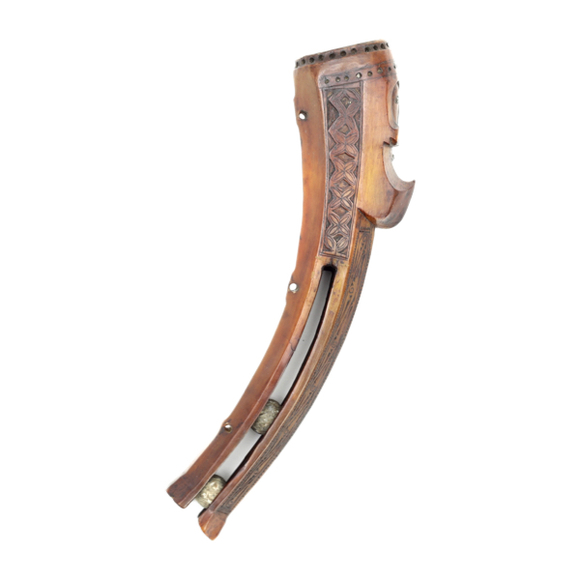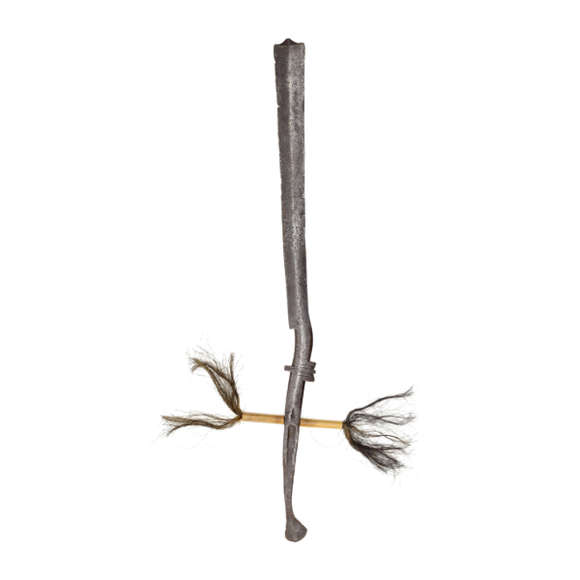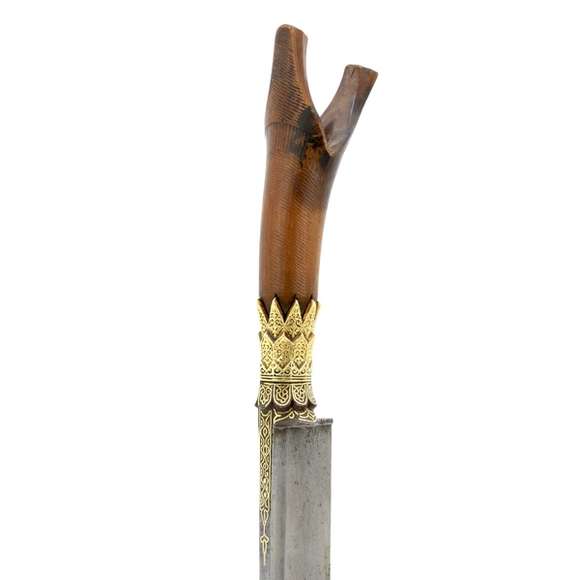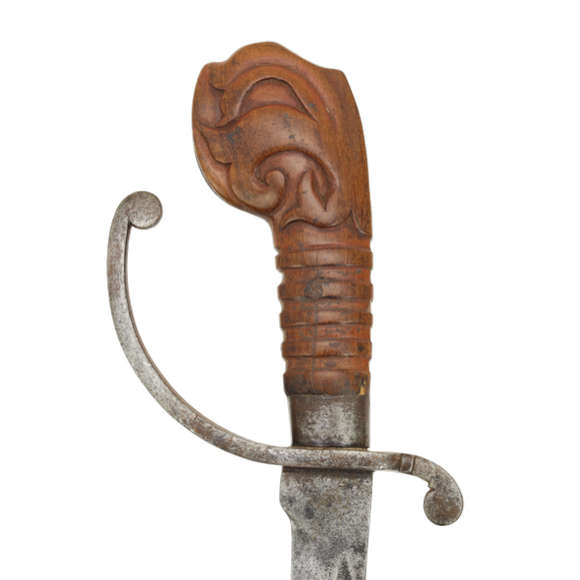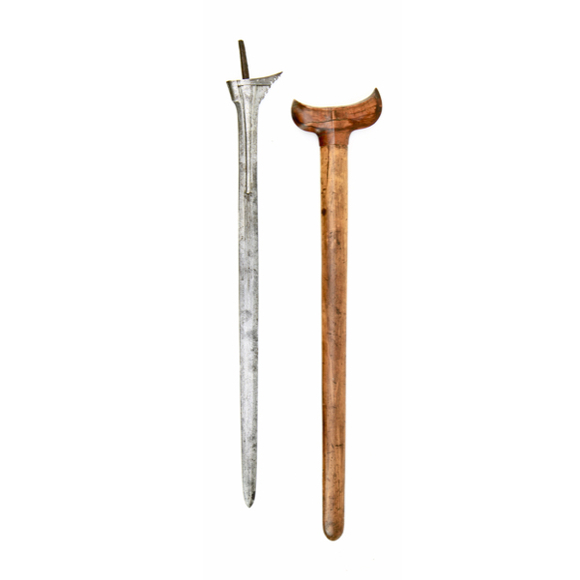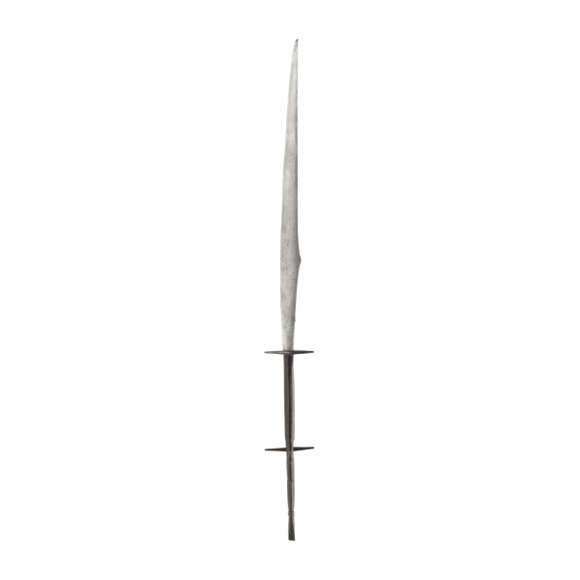Carved of amber-colored horn, with an ancestral face with metal inlays.

72 cm
53 cm
Brass, iron, wood, lacquer
Toba Batak, Sumatra
19th century
Description
A Toba Batak sword with a cast brass figurative handle that depicts a guardian figure. Such swords were carried by chiefs and the datu, a magician-priest.1
Batak guardian figures were called pangulubalang. Most villages had a stone example that was supposed to warn the villagers of war or problems with their crops. The Toba Batak would animate these statues with compounds made of the tissue of a human body. Preferred were the bodies of women who died during labor, young males, or even better: those killed in violence. It was thought the life essence needed to animate these statues was still “fresh” in them, not yet used up by old age.2
These compounds would be inserted in special holes on the statue. This sword hilt has space on top of the hat, although it’s unclear to me whether it was actually used for this purpose.
The blade has a gentle curve and a small protrusion near the base, something observed more often on Batak swords. The scabbard is fitted with lovely brass mounts in the typical Toba Batak style. The main scabbard body is covered with segments of brass. It also has the characteristic brass chain that is often present on these.
Condition
The blade’s surface seems coarsely ground, I’m afraid relatively recently. The scabbard body also went through some restoration. All brass work is original and in good condition.
Notes
1. Richard van Alphen; De grote pustaha, Tropenmuseum Amsterdam. Google Arts & Culture.
2. Kruijt, Alb. C.; Het animisme in den Indischen archipel, Martinus Nijhoff, ‘s Gravenhage, 1906. Pages 216-220







This peculiar sword was used by the Garo people of Assam for fighting, clearing the jungle, and animal…
Its blade with very fine and complex pamor, brought out by a polish.
These mysterious weapons were already obsolete when the first ethnographers encountered them.

